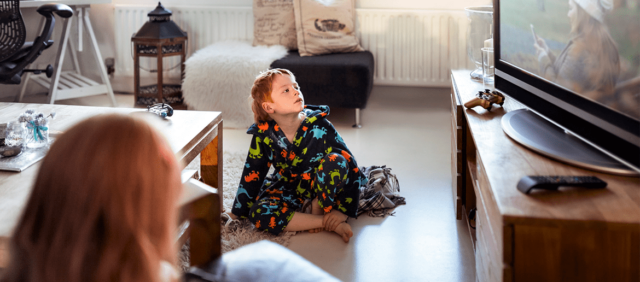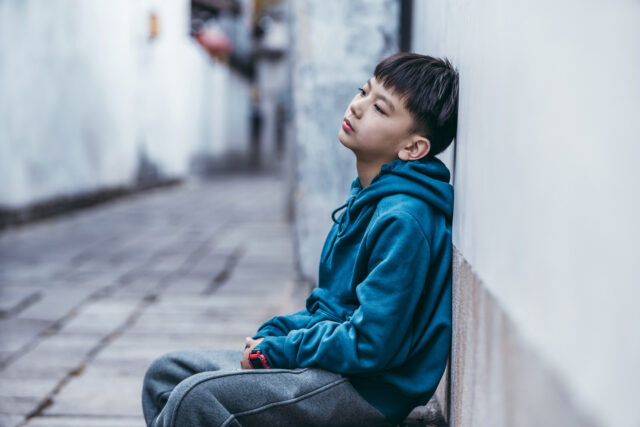Why Kids Need to Spend Time in Nature
Why Kids Need to Spend Time in Nature
They may prefer to stick to their screens, but here's why getting outdoors matters
en EspañolWhat You'll Learn
- How much time do most kids spend inside?
- What are the benefits of being in nature?
Quick Read
These days, kids spend much more time inside, mostly thanks to technology. Spending time outdoors isn’t just enjoyable — it’s also necessary. Many researchers agree that kids who play outside are happier, better at paying attention, and less anxious than kids who spend more time indoors.
Spending time in nature can build their confidence. There’s a lot less structure than most types of indoor play and they can choose how they interact with the nature around them. This gives them practice managing their own actions and encourages creativity and imagination.
Being outdoors can also teach them responsibility. For example, if they are in charge of watering a plant, they can learn that they must take care of living things to keep them alive.
Being outside gets kids moving, too. Regardless of what they’re doing, there’s usually more exercise involved than if they were sitting on the couch. Not only is exercise good for kids’ bodies, it seems to make them more focused. This is especially helpful for kids with ADHD. Being outside also helps kids feel less stressed.
Full Article
5 min read
In the early 1980s, a Harvard University biologist named Edward O. Wilson proposed a theory called biophilia: that humans are instinctively drawn towards their natural surroundings. Many 21st century parents, however, would question this theory, as they watch their kids express a clear preference for sitting on a couch in front of a screen over playing outside.
The national panic about kids spending too much time indoors has become so extreme that the crisis has a name: Nature deficit disorder.
While calling it a disorder might be merely rhetorical, it’s clear kids spend significantly more time inside than outside. This shift is partly due to technology: Richard Louv, author of the book Last Child in the Woods: Saving Our Children From Nature-Deficit Disorder, tells the story of interviewing a child who told him that he liked playing indoors more than outdoors “’cause that’s where all the electrical outlets are.”
Increasing parental fears about diseases and dangers of playing outside — despite evidence to the contrary — are another big factor.
And as suburbs and exurbs continue to expand, nature is parceled off more, and kids seem less inclined to spend time in a fenced-in yard, let alone jump the fence into a neighbor’s or walk in the woods. Instead, indoor activities can seem easier (no sunscreen necessary!), safer, and even more sociable for kids who are growing up with multiplayer video games and social media accounts.
Why go outside?
Recent studies have exposed the benefit — even necessity — of spending time outdoors, both for kids and adults. Some argue that it can be any outdoor environment. Some claim it has to be a “green” environment — one with trees and leaves. Others still have shown that just a picture of greenery can benefit mental health. These nuances aside, most of the studies agree that kids who play outside are smarter, happier, more attentive, and less anxious than kids who spend more time indoors. While it’s unclear how exactly the cognitive functioning and mood improvements occur, there are a few things we do know about why nature is good for kids’ minds.
- It builds confidence. The way that kids play in nature has a lot less structure than most types of indoor play. There are infinite ways to interact with outdoor environments, from the backyard to the park to the local hiking trail or lake, and letting your child choose how they treat nature means they have the power to control their own actions.
- It promotes creativity and imagination. This unstructured style of play also allows kids to interact meaningfully with their surroundings. They can think more freely, design their own activities, and approach the world in inventive ways.
- It teaches responsibility. Living things die if mistreated or not taken care of properly, and entrusting a child to take care of the living parts of their environment means they’ll learn what happens when they forget to water a plant, or pull a flower out by its roots.
- It provides different stimulation. Nature may seem less stimulating than a video game, but in reality, it activates more senses — you can see, hear, smell, and touch outdoor environments. “As the young spend less and less of their lives in natural surroundings, their senses narrow,” Louv warns, “and this reduces the richness of human experience.”
- It gets kids moving. Most ways of interacting with nature involve more exercise than sitting on the couch. Your kid doesn’t have to be joining the local soccer team or riding a bike through the park — even a walk will get their blood pumping. Not only is exercise good for kids’ bodies, but it seems to make them more focused, which is especially beneficial for kids with ADHD.
- It makes them think. Louv says that nature creates a unique sense of wonder for kids that no other environment can provide. The phenomena that occur naturally in backyards and parks everyday make kids ask questions about the earth and the life that it supports.
- It reduces stress and fatigue. According to the Attention Restoration Theory, urban environments require what’s called directed attention, which forces us to ignore distractions and exhausts our brains. In natural environments, we practice an effortless type of attention known as soft fascination that creates feelings of pleasure, not fatigue.
So while screen time is the easier, more popular choice, it’s important to set aside time for outdoor play. For fun, stimulating activities you and your kids can do in nature, see Ideas for Getting Your Kids into Nature.
Frequently Asked Questions
This article was last reviewed or updated on November 13, 2024.
Topics
Danielle Cohen
Danielle Cohen is a freelance journalist in New York City.
Was this article helpful?
Related Reading
-
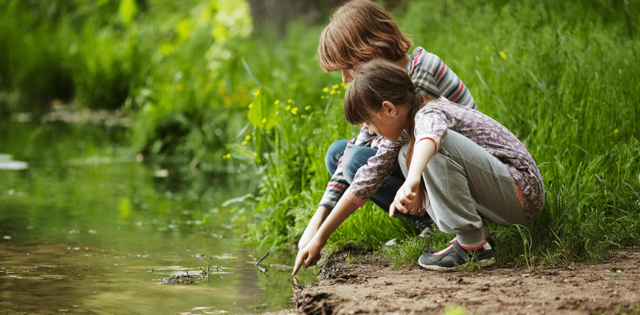 Ideas for Getting Your Kids into Nature
How to make being outdoors fun and rewarding for kids inclined to stick to their screens
Ideas for Getting Your Kids into Nature
How to make being outdoors fun and rewarding for kids inclined to stick to their screens
-
 Animals, Nature Offer Children a Fresh Start
Two special-needs schools help kids succeed using horses, dogs, sheep — even injured birds of prey
Animals, Nature Offer Children a Fresh Start
Two special-needs schools help kids succeed using horses, dogs, sheep — even injured birds of prey
-
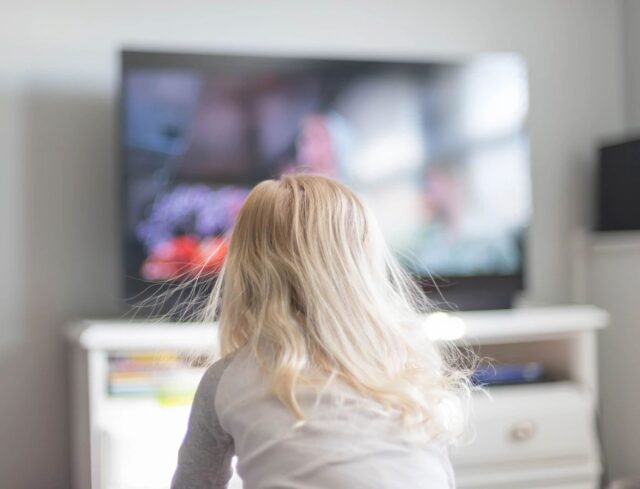 Why Is Screen Time Bad for Young Children?
Dr. Kimberly Noble on one-on-one time and language development
Why Is Screen Time Bad for Young Children?
Dr. Kimberly Noble on one-on-one time and language development
-
 Complete Guide to Managing Behavior Problems
When children struggle with their behavior, it can have a negative impact on everyone in the family. Parents know they need to respond, but they…
Complete Guide to Managing Behavior Problems
When children struggle with their behavior, it can have a negative impact on everyone in the family. Parents know they need to respond, but they…
-
 Screen Time and Summer
Strategies for making a plan that works for both you and your kids
Screen Time and Summer
Strategies for making a plan that works for both you and your kids
-
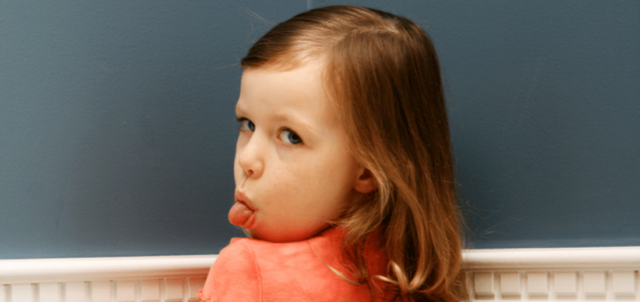 How to Make Time-Outs Work
They're a popular, but complicated, disciplinary tool. Here's how to use them effectively
How to Make Time-Outs Work
They're a popular, but complicated, disciplinary tool. Here's how to use them effectively
-
 Does Social Media Use Cause Depression?
How heavy Instagram and Facebook use may be affecting kids negatively
Does Social Media Use Cause Depression?
How heavy Instagram and Facebook use may be affecting kids negatively
More Related
